Wellness Travel
11 Highly Vetted Wellness Destinations
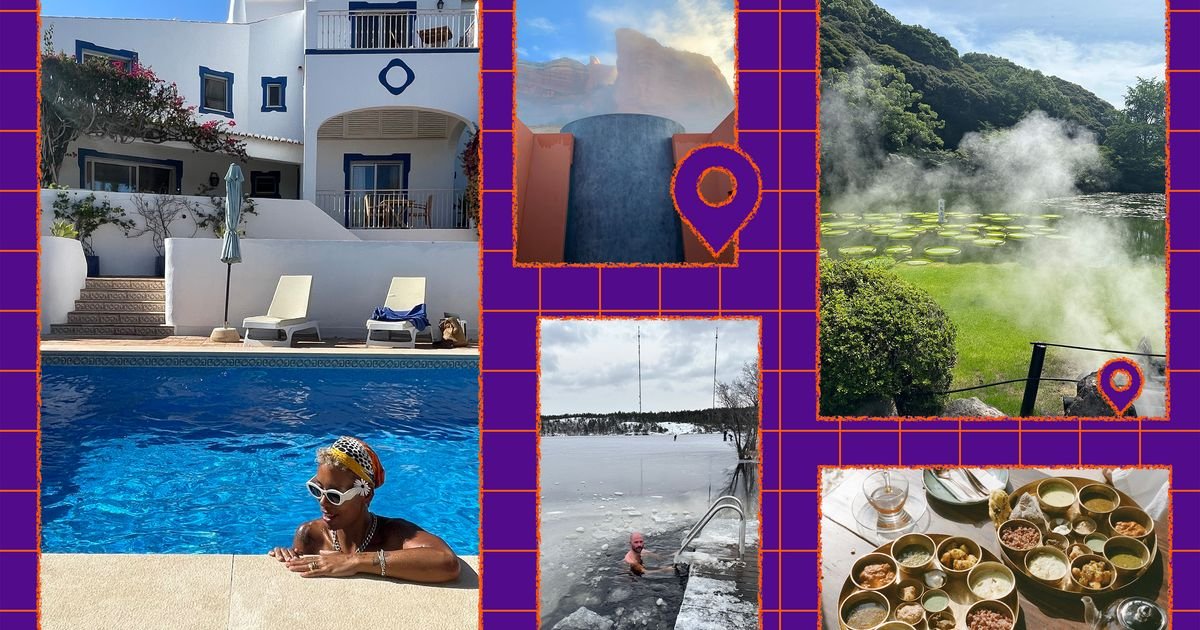
Photo-Illustration: The Strategist; Photos: Jenna (J) Wortham, Lizzy Wholley, Joomee Song, Corbin Chamberlain, Alex Tieghi-Walker
We’ve written about traveling smoothly with kids, Paris without the crowds, and adventures in the outdoors, but none are exactly restorative. These 11 retreatlike vacations below are the ones that people with very good taste book (and often return to) when they need a reset.
Ålesund, Norway
“Ålesund, Norway, is where I go to immerse myself in nature. The Hotel Union Øye is tucked in the lush, storybook landscape of Norway’s Sunnmøre Alps. It’s a gorgeous Victorian-era hotel with creaking floorboards and flickering candlelight that feels like a love letter from the past. The rooms are named after writers, artists, explorers, and royalty who cherished this place a lifetime ago — my favorite room is one of the Junior Suites, which is in the main house, has views of the fjords and the Norang valley, and a gorgeous deep soaking tub. I like to start my day eating the fresh pastries in the glass-encased conservatory, then go for a hike through the misty green hills behind the hotel. After hiking, I head for the traditional wood-fired sauna perched at the edge of the fjord and cycle between sweating it out in the fragrant cedar-scented heat then plunging into the icy, glacial waters below. It’s invigorating and meditative, a kind of elemental luxury that lingers long after I leave.” —Sophie Bolvary, massage therapist
Palmaïa, Mexican Riviera
“My favorite wellness retreat is Palmaïa in the Mexican Riviera. It’s a super-serene escape of lush jungle and turquoise waters and with none of the buzz of the bigger beachside resorts in the area, which can just feel like an extension of the city. When you arrive, you’re paired with a guide who’s there to take care of everything. There’s no need to plan or produce (which I often find myself doing); you just sit back and go with whatever calls you. It was my first time at an all-inclusive resort, which totally changed the game for me when it came to actually relaxing — no surprise costs at the end. You don’t feel guilty ordering a snack or an extra dish. All the food — four restaurants and a taco truck with the best vegan tacos I’ve ever had — is included. As an introvert who’s also neurodivergent, I can be pretty sensitive to more ‘woo-woo’ experiences, but this was more my speed. Everything felt low-key and welcoming; even the yoga classes are designed with space to just show up and move however you need. One thing I did try was a cacao ceremony, an ancient Mesoamerican tradition. I had no idea cacao was considered a kind of plant medicine; it has a mild stimulant that’s believed to increase blood flow and open the heart emotionally. I went in upright and left totally open with a warm, fuzzy vibration moving through me. I also booked a physical-therapy session with Angel. It was painful in that ‘oh wow, he found something that needs healing’ kind of way. I felt relaxed and grounded for the rest of the stay. But what I loved most about this place was the wildlife and fauna. A lot of resorts promise ‘reconnection with nature’ but offer a manicured version of it. Here, it’s the real deal. You’ll actually be stopped by iguanas, spider monkeys, and sereques. And if you’re even a low-key birdwatcher, this place is paradise. Bring your telephoto lens and binoculars.” — Clémence Polès, photographer and founder of Passerby
Sedona, Arizona
“I start my trip at Mii Amo, which has truly nailed the immersive-wellness-hotel experience. I always book a Junior Suite room because it has a fireplace, and you’ll likely be out of the room more than in it — anything more feels unwarranted. Every part of your stay is a wellness journey — from spa treatments (the four-handed Abhyanga massage will change your life), to energy work, to having a conscious moment to let go of things you might be carrying around or give yourself permission to unhook from a person or experience. Even past-life regression — it sounds gimmicky, but you’re in Sedona, and it’s the Sedona thing to do. Plus, I find it to be clarifying. I always make sure to book time with Ryan Karner in advance for a sound-healing session. After a three-night journey at Mii Amo, I head to Sedona Mago, which is a little less glossy but so serene and relaxing. Most important, it really delivers on the wellness side: It’s very heavy on meditation. Sedona Mago’s meditation programming is woven into nearly every part of the retreat experience. Mornings begin with sunrise meditation facing the eastern ridge of the canyon — silent, intentional, and phone-free. Throughout the day, there are structured classes in deep breathing, chakra-based visualization, and a practice they call ‘Water Up, Fire Down,’ which is centered on balancing energy flow through the body’s core. Most sessions are led by longtime Tao-based practitioners, and unlike trendier wellness spots, there’s no soundtrack and no props — just repetition, stillness, and guidance. You can feel the land doing half the work.” —Corbin Chamberlin, founder of Sage & Salt
Dunton Hot Springs, Colorado
“Dunton has been my favorite hideaway in the world for over ten years. Any time I think of it, my heart melts a bit. The setting, a valley in Colorado 25 miles south of Telluride, is breathtaking and the property, a former ghost town revived to splendor, feels like stepping back in time but with all the modern amenities that you desire. Accommodations are intimate cabins, some outfitted with wood-burning stoves; I like to book the Well House one because it has a cold plunge. I will soak multiple times a day in the five natural hot springs on-site — my favorite is the Bathhouse where I can stare out at the trees — and, in the spring and summer, hike and horseback ride through the wildflower meadows and San Juan Mountains nearby. There’s an amazing spa on-site where I’ll take morning yoga classes and book a massage using hot stones, which they gather from the Dolores River nearby, or a facial (they use Susanne Kaufmann products). I’m vegan and chef Alex Calderon creates a beautiful menu that always features plenty of options for me. If you want to venture off-site, Sutcliffe Vineyard is nearby; their 2022 Malbec wine is to die for.” —Kate Orne, editor in chief of Upstate Diary
Eremito, Umbria
“Eremito is nestled deep in the hills of Umbria, Italy, and the journey to get there is an adventure itself, driving on winding potholed dirt roads through a thick forest. I traveled there in the rain, mid-April, and everything was soaked in this kind of earthy calm, and when I arrived the clouds opened and sunlight streamed through the trees, which felt like nature setting the tone for the week ahead: Slow down, soften, let go. Eremito is housed in an old stone monastery with thick walls; heavy wooden doors; these long, dim corridors; and this scent of incense wafting throughout. My room was super-simple, even austere, but beautifully designed for rest and reflection with a stone desk by the window; a plush, comfortable bed; and a minimalist, elegant bathroom. I came as part of a retreat hosted by Julia von Winterfeldt and Andrea Friedrich of From Role to Soul, a program designed to support reflection and inner growth. The rhythm of the days was structured but spacious — I did morning yoga, then deep group sessions, long lunches, then shared dinners and evening circles. It was a full experience but never rushed. The food was also a standout, even as a vegetarian. Breakfasts had tomatoes and eggs, flatbreads, cakes, and jams; lunch was served on the terrace overlooking the valley; and dinner is eaten in silence in their candlelit grotto with the only soundtrack being soft Gregorian chants and the forks tapping on plates. An ideal place for solo silent time.” —Robyn Davie, brand strategist and career consultant
Oita, Japan
“In Beppu in the Oita prefecture of Kyushu, Japan, there is a place that the locals call the Hells of Beppu where seven different types of hot-spring waters flow directly from a volcano that erupted over 100 years ago. You can’t bathe in the waters because they’re literally steaming hot, but there is one mud-bath house, adjacent to the Hells of Beppu, where bathing is possible, and it’s amazing. The bathhouse doesn’t have a website and only locals really know about it, but it’s worth seeking out. The place is called ‘Koudei-onsen.’ (The phone number is 0977-66-0863 and their business hours are from 8:15 a.m. until noon. They are closed on Thursdays.) The water feels silky, and the mud particles are so smooth they’re quickly absorbed by the skin. They recommend bathing for 15 minutes, then sitting outside to let the mud dry for another 15 minutes; you repeat the cycle three times. By the end I was exhausted, but by the next day it was like clouds had been lifted from my body and mind. The ideal time to visit is in the colder months, from October through March, and don’t bring your kids; no one under 18 is allowed because the minerals in the mud water are so intensely detoxifying. After three rounds of dipping, I’ll sit and rest naked (everyone is, by the way) and let the mud really sink into my body. Then I’ll go to Tsukahara no Sato, a popular charcoal grill for organic Jidori (Oita is known for organic Jidori) and vegetables; just be prepared to wait at least two hours! I highly recommend staying at the ryokan Kannawa Bettei, which is tucked into a hillside in Oita; it features beautiful architecture and offers nightly kaiseki dinners paired with sake from local breweries.” —Joomee Song, celebrity facialist
Sweden and Denmark
“This past winter I wanted to give myself space for a bit of a reset. I flew to Stockholm from London, then took the train all the way back, meandering (with a big pile of books) through various European cities on the way. The Scandinavia section of the trip had one purpose: saunas. I love the culture of bathing, and in Scandinavia it’s just such a normal part of life. I booked a little attic Airbnb in Gamla Stan, Stockholm’s historic old town, and found myself heading to more local types of public saunas in the suburbs, like the Hellasgården Bastu, a 20-minute Uber from the center. The 1970s-era co-ed sauna compound is low-key (bring your own towel) but perched on the banks of a stunning lake — totally frozen over, save for a small dunking hole cut into the ice that was exhilarating and brilliant. Sauna, dunk, sauna, dunk … all afternoon. I peppered my sauna trips with studio visits and museum trips in the snow and lost myself in the heavenly Svenskt Tenn store. My friend gallerist Carl Kostyál sent me to eat at Babette, which was one of the best meals I had all winter. I continued my sauna tour in Copenhagen — the train from Stockholm to Copenhagen is so easy, with a great dining car (serving fresh salmon) and views across the Swedish landscape for six or so hours. Copenhagen’s Sauna Badehuset — a couple of dollars to get in, a few more for a paper cup full of exfoliating mud — is housed in a former power plant in the anarchist commune of Christiania.” —Alex Tieghi-Walker, curator and founder of Tiwa Select
Dolomites
“I really abide by Ayurveda and its principles, so I’d been wanting to do a Panchakarma detox for a while but never found the time to go to India. So, I was thrilled to discover Engel Ayurpura, a place that really embraces Ayurveda in an authentic way but is in Europe. The South Tyrol area is just so beautiful and really feels like an escape from reality. I adore hiking up the mountains and meditating on whatever random bench I find overlooking the vast Dolomites. The detox at Engel is a true reset and although the idea of that may sound daunting, this one is like wrapping yourself up in a comforting blanket. Every day I spent the mornings doing yoga and breathwork in the morning, then I would take a long hike, swim, log time in the sauna, and get two hours of massage. The food is all Ayurvedic, so vegetarian and wholesome and nourishing with a lot of healing spices and ghee, incredible for digestion and cleansing. I looked forward to and savored every meal, except on the pure detox day when you only drink castor oil and eat broth — that was a little more intense.” —Yasmin Sewell, energy worker and founder of Vyrao
Himalayas
“I was invited to a friend’s wedding in Jaipur and when I heard that Tony Lupinacci, one of my favorite yoga and meditation teachers, was doing a retreat in Rishikesh around the same time, I knew I had to go. I love the way Tony explains spirituality and makes everything very digestible, and he was hosting the Rishikesh retreat with Flor Daneu who lives there half the year and has deep connections with the local yoga community. We started every day with breathwork and meditation, then a really vigorous asana class, then we’d have philosophy classes, learn how to cross the Ganges by boat, and experience a class with a local yoga teacher. I stayed at the Antalya, which was serene and lovely and where I woke up every morning and watched the same man walking his donkey along the river, and I think I ate at this place called B Monk every day, where you’d get these small boxed lunches aligned with the six traditional Ayurvedic tastes. After the retreat, my friend and I went to Ananda, this gorgeous wellness retreat that is about 30 minutes away (the road to get there is very windy so if you get car sick, brace yourself) in the Himalayas. The property just blew me away, and there is so much attention to detail. When you arrive you meet with their Ayurveda doctor who uncovers your issues (I’m an overthinker) and identifies your dosha (I’m a vata), and then your meals are designed around your dosha and goals for the rest of your stay. I had this beautiful porridge with dates, nuts and maple every morning along with a turmeric-ginger immunity shot, and, ginger chicken in the afternoon.” —Lizzy Wholley, director of experiences at Bloom Farm
Algarve Coast, Portugal
“I’ve never been on a yoga retreat. Love a workshop, love a class, never felt the need to make it a destination vacation. Group trips give me a particular kind of anxiety. Small talk? Off payroll? Pass. One of my favorite parts of travel is rediscovering my own inner rhythms about how I’d like to spend my time, and it feels impossible to do that in a herd. But when I saw that Aimee Meredith Cox, one of my favorite teachers (who is also a choreographer and dance scholar), was hosting a retreat along the Algarve Coast in Portugal, I had to sign up. Aimee is a tender, mystical woman, capable of holding powerful and transformative space. She’s more than a yoga teacher — she’s a professor, so I knew this would be an opportunity to study embodiment as a place for Black feminist practice and collective memory. The retreat rented out the Quinta Bonita Algarve, a gorgeous villa with walking trails and a crisp pool and views of the sea. It’s a healthy ways away from the hectic British tourist scene that dominates the coast in the summer months. The yoga studio was breathtaking and overlooked lush gardens. Mornings began early in that sun-loved space with vigorous movement to Nina Simone and readings by Toni Morrison. Then we usually had free time or optional group activities. Our evenings ended with breathwork or journaling and slower movement. The hotel offered massages, which I got between class, swims, and meals. A couple times I took a taxi into the town of Lagos to have lunch at a local café — really anywhere that had local grilled sardines or oysters. One day I stopped by the Antigo Mercado de Escravos, the Portuguese slave market, to visit the museum and pay respects to my ancestors. Painful, but important. I also enjoyed a day trip to the Praia João de Arens beach, a little inlet where clothing is optional. The water is freezing, but it’s great.” —Jenna “J” Wortham, writer and author of forthcoming “Work of Body,” and sound healer/herbalist/reiki practitioner
The Strategist is designed to surface useful, expert recommendations for things to buy across the vast e-commerce landscape. Every product is independently selected by our team of editors, whom you can read about here. We update links when possible, but note that deals can expire and all prices are subject to change.
Wellness Travel
Sleep Tourism Revolutionizes Wellness Travel: How Luxury Travelers Are Prioritizing Rest and Recharge Over Packed Itineraries

Monday, August 4, 2025
Wellness tourism has traditionally revolved around spas, yoga retreats, and fitness holidays. However, wellness travel is now undergoing a new transformation with the emergence of sleep tourism. As health and wellness travel continues to grow, there is a new trend among luxury travelers, who now prefer holidays dedicated solely to repose and recovery. Indeed, sleep is the new luxury, as high-end travelers now enjoy vacations specifically designated to help them relax and recover in ways that sightseeing trips cannot.
The paradigm shift away from vacations based on cramming as many attractions into a limited timeframe is now emerging. The post-pandemic era has ushered in a new vacation paradigm focused on recovery, relaxation, and quality sleep. Coupled with the harried pace of life, the enduring post-pandemic reset is prompting many travelers to understand and appreciate that real luxury is not in an exhausting to-do list of activities, but in the ability to fully reset both mentally and physically. This burgeoning shift is only going to further refine the contours of the sleep tourism market.
The Introduction of Sleep Tourism
With an overbooked timetable, nonstop screen exposure, and anxiety levels at an all-time high, resting has become a crucial part of our life, an undeniable and non-negotiable need. For decades, opulent vacations have been synonymous with high-end hotels, a-la-carte dining, and exclusive access, and while these features are still attractive for travelers, there has appeared a new niche that prefers tranquility, stillness, and more crucially, respite. Travel for the purpose of resting has emerged to help people escape the endless cravings and repace modern lifestyles to prioritize, more unequivocally, their needs: resting.
The entire industry is focused on ensuring that clients are adequately restored, with the intent to optimize rest and health at all levels. Sleep tourism may look like high-end hotels that provide specialized sleep-boosting services or entire pre-designed holistic vacations for sleep-betterment. Sleep-enhancing travel experiences look markedly different and their core is not to dragging the clients around endless sightseeing, cramming numerous activities each to minute precision. Instead, these journeys have proved to be life and well-being enhancing.
The Sleep Tourism Experience: Rest as the Ultimate Luxury
Unlike conventional vacations which focus on discovering new places, sleep tourism focuses on making the perfect environment for sleep. There are now hotels and wellness resorts at the top of the industry that are promoting sleep through the use of advanced technology, sleep therapeutic environments, and professionals to boost sleep adherence by making sleep restorative.
An added benefit of luxury retreats are the many services aimed at enhancing and promoting sleep. These services include sleep consultations with experts, mood lighting that mimics natural circadian lighting, aromatherapy, top of the range mattresses, and specially designed pillow menus. Additionally, resorts serve sleep enhancing foods and beverages like chamomile tea, magnesium rich snacks, and melatonin infused treats which promote relaxation.
Some retreats create full programs dedicated to helping guests sleep. This includes tailoring daily meditation, sound therapy, relaxation, and sleep inducing massages to the guest’s sleep goals. This method, while deeper than traditional spa services, focuses on rest at the heart of the travel experience instead of spa treatments. This approach is holistic and blends many treatments for wellness.
The Rise of Sleep-Centered Vacations
The popularity of wellness tourism is leading to an increased demand for sleep-centered vacations. Modern travelers understand sleep’s benefits not only for their physical well-being but also for their mental and emotional health. We know that sufficient sleep improves mood, productivity, and overall immune health. The understanding and appreciation of sleep’s restorative benefits and its vital role in health and wellness has only recently started gaining traction.
In response to this emerging trend, an increasing number of luxury hotels, resorts, and retreats are developing programs aimed at enhancing sleep quality. Some accommodations are now catering to travelers who wish to unplug and fully immerse themselves in rest, offering tech-free rooms and restorative sleep environments where guests can truly relax.
In more metropolitan areas, some luxury hotels are also offering sleep-related amenities—such as sleep pods— and the scheduling of personalized sleep sessions. Guests are no longer simply resting between activities. Instead, they are indulging in more structured, deep relaxation that invites restorative relaxation.
Sleep Tourism and Its Effect on the Travel Industry
The emergence of the sleep tourism industry is particularly affecting luxury travel and the wellness sectors. It is resulting in the transformation of the travel industry as people shift their focus from sightseeing and adventure to rest and recovery. People are not just looking to enrich their travel experience but also to enhance their lifestyles and overall well-being.
The sleep tourism industry is also being further refined as hospitality resorts are improving their quality and level of service. They are now incorporating sleep science, and some resorts go as far as collaborating with sleep doctors to create custom sleep programs. Many luxury hospitality brands are turning to sleep improving devices, such as sleep-tracking devices, AI-powered sleep systems, and advanced lighting techniques, which scientifically enhance sleep. Rather, what constitutes a luxury vacation is being redefined to focus on the guests’ peace and balance within, rather than souvenirs and extravagance.
Wellness and Its Relation to Sleep Tourism
Wellness tourism has always focused on rejuvenation and self-care, with sleep tourism fitting neatly within these sweeping trends. Sleep, alongside exercise and diet, is one of the most vital components concerning health. It has long been considered the least important out of the three. Yet, the global rise in stress – and with it, the number of people suffering from sleep-related issues – is changing the narrative toward the need to sleep.
Sleep tourism is in tandem with the heightened demand for holistic wellness journeys, where one is able to travel and attend to every area of their body and mind. It allows people to completely turn off their devices and dedicate themselves to self-care, meditation, and healing. These wellness retreats help people step away from the overwhelming and countless responsibilities of daily life, travel, reset their biological clock and come back with an unsuspected rejuvenation.
Sleep tourism is an excellent alternative for people looking for a better balance in their trips. Instead of focusing on visiting countless locations to further pass the time, holidaymakers can now place a premium on health. With the changing of travel habits, the industry is beginning to embrace the concept of vacations focusing on rest and recovery – considered the new hallmarks of luxury.
The Effect on Travel Preferences and Popular Destinations
The emergence of sleep tourism is shifting how people select their travel destinations. While adventurists and sightseers previously prioritized active relaxation vacations, focus on relaxation has now shifted towards these leisurely centered getaways. Cozy accommodations in mountains and countryside resorts, as well as coastal retreats, are now popular as travelers actively seek rest and sleep.
Hotels and resorts are now offering tailored sleep and rest services, providing soundproof rooms, blackout curtains, and other aids that help guests achieve gentle and restorative sleep in these serene surroundings. These rest care escapes cater to people who want to completely disconnect from everyday stressors and center their attention on their mental and physical health. Given their unobtrusiveness, these escapes are ideal for individuals who want to relax far from the noise and stress of everyday life.
A New Look on Opulent Travel
The focus on sleep has redefined luxury travel. Resting in opulent accommodations has shifted sleep means luxury travel. In the past, luxury travel centered on indulgent, extravagant dining, overpriced activities, and exclusive services offered to guests. Now, the luxury of sleep and relaxation has emerged as a new offering for tourism. For wealthy travelers, the opportunity to truly decompress and rejuvenate has shifted luxury to sleep tourism, which is a means to achieve the maximum rest.
The change in emphasis reflects broader sociocultural trends. In the context of modern day challenges, especially in high-pressure metropolitan areas, there is increasing awareness of the need for rest. Consequently, sleep tourism emerges not only as a travel trend but as a new cultural shift towards mindfulness, and balanced holistic wellness.
Conclusion: The Future of Sleep Tourism
The evolution of travel is undeniable and sleep tourism, as a concept, is an indicator of this. In the wellness tourism sector, rest which was previously overlooked is emerging as a focal point. For high-end travelers, a vacation is not solely an escape but a holistic opportunity for rejuvenation and reset of the body and mind. Sleep tourism enables travelers to put their health on the priority list unlike in traditional vacations, signaling the dawn of wellness-driven travel.
In the coming years, we can expect many travel destinations and luxury resorts to begin incorporating the principles of sleep tourism, integrating rest and recovery as a crucial segment of the travel itinerary. The more central sleep tourism becomes, the more it will continue to redefine the purpose of vacationing—offering a getaway balanced on uninterrupted repose, not on a checklist of activities.
Wellness Travel
Amangati Cruise Pioneering the Future of Ultra-Luxury Maritime Travel with Exclusive Mediterranean Escapes, Exceptional Wellness Retreats, and Bespoke Onboard Experiences Crafted for Discerning Travelers

Monday, August 4, 2025
Amangati – A New Era of Ultra-Luxury Travel at Sea
In Summer 2027, the world of maritime luxury is set to change with the arrival of Amangati, an extraordinary new vessel that promises to redefine the experience of sea travel. As the first ship to debut from Aman at Sea, Amangati is opening a new chapter for those seeking the highest level of opulence, privacy, and elegance on the open waters. Now accepting bookings for private charters and events, this stunning vessel offers travelers a new way to connect with the vastness of the sea, far beyond the reach of traditional cruising experiences.
A Floating Sanctuary of Tranquility
At the heart of Amangati’s concept lies the Aman philosophy—a focus on peace, privacy, and a strong connection to the environment. This philosophy is brought to life in a floating sanctuary designed for ultimate relaxation and exclusivity. Every suite on board has been meticulously crafted to be a personal haven, where guests are treated to unobstructed views of the ocean and the surrounding horizons. Many of the suites feature private terraces, allowing guests to immerse themselves in the surrounding seascape, while others offer plunge pools for a more intimate, luxurious experience, ideal for unwinding in style.
The design of the vessel is deeply inspired by the Japanese ryokan tradition, focusing on simplicity, natural materials, and a minimalist aesthetic that fosters a serene environment. The interiors incorporate calming elements such as organic materials and subtle, earthy tones that promote relaxation. Every part of Amangati—from its vast, open communal spaces to its secluded, intimate corners—has been carefully planned to offer guests a peaceful and tranquil atmosphere, ensuring that it is not only a vessel but a true sanctuary on the water.
A Journey for the Senses: Culinary Delights
Dining aboard Amangati is designed to be a global culinary adventure, where guests can indulge in the finest flavors from around the world. The ship’s restaurants promise an immersive experience that goes beyond simple meals, making every dining moment an event in itself.
The signature Japanese restaurant on board, Nama, offers refined sushi and traditional Japanese dishes, prepared by expert chefs using the finest ingredients. This is a place where guests can enjoy authentic, beautifully crafted Japanese cuisine as they look out onto the sea.
For those who crave the flavors of the Mediterranean, Amangati offers an all-day dining option that brings the sun-soaked tastes of Southern Europe to life. This restaurant will serve dishes that celebrate the vibrant, fresh, and bold flavors of coastal cuisine, inspired by the Mediterranean region’s rich culinary heritage.
At the Aman Grill, guests can enjoy a combination of elegant, yet hearty meals, served in a sophisticated yet laid-back atmosphere. The focus here is on providing a warm, welcoming space where diners can enjoy timeless, comforting dishes.
For evening entertainment, a Jazz Club will provide a stylish setting where guests can enjoy live music performances and socializing, further enhancing the sophisticated atmosphere aboard Amangati.
Wellness and Recreation on the High Seas
Wellness is an integral part of the Amangati experience. The vessel features a dedicated Aman Spa, where guests can indulge in a variety of rejuvenating treatments designed to nurture both body and mind. The serene ocean backdrop enhances the overall sense of peace, making the spa the perfect place to relax and restore.
In addition to wellness offerings, the ship includes an expansive marina deck designed for water-based recreation. The deck allows guests to enjoy a variety of aquatic activities, from sunbathing and leisurely sailing to more adventurous water excursions. Whether lounging under the sun or exploring the ocean depths through water sports, the expansive deck offers endless possibilities for enjoyment, ensuring there is something for every guest.
The vessel’s design reflects the Aman ethos, combining elegant simplicity with effortless luxury, making it a true reflection of the brand’s commitment to excellence. Whether guests are seeking relaxation or adventure, Amangati provides a fully curated experience designed to meet their desires.
Exclusive Mediterranean Voyages
Later in the year, Amangati will begin accepting bookings for exclusive Mediterranean journeys, where guests will have the opportunity to explore some of the most stunning and culturally rich regions of the Mediterranean. These carefully curated voyages will provide a tailored travel experience, allowing guests to visit historically significant coastal towns, indulge in authentic local cuisines, and relax in hidden, secluded coves far from the crowds.
Each journey will be fully personalized, ensuring that guests are able to enjoy a deeply immersive and customized exploration of one of the world’s most iconic regions. From the historical treasures of Greece and Italy to the scenic beauty of the French Riviera, these Mediterranean voyages promise to offer a truly transformative experience, tailored to the individual preferences of each guest.
Transforming the Luxury Travel Landscape
The launch of Amangati represents a major shift in the luxury travel industry, particularly within the maritime sector. By offering private charters and curated itineraries, the vessel is setting a new standard for exclusive, high-end travel. Unlike traditional cruise experiences, which are often mass-market in nature, Amangati provides an ultra-exclusive, intimate experience designed for those who value privacy and personalized service above all else.
This new approach is expected to resonate with a growing number of travelers who prefer tailored, bespoke journeys rather than conventional, large-scale cruises. As demand for customized travel increases, the trend is likely to shift more toward private voyages, where travelers have greater control over the itinerary, the onboard experience, and the level of service they receive.
In addition, the wellness tourism market is expected to benefit significantly from Amangati‘s offerings. As more individuals seek relaxation, rejuvenation, and personal growth through travel, the spa and wellness facilities aboard the vessel will cater to this rising demand. Guests will have the opportunity to disconnect from the stresses of everyday life, while being pampered in an environment designed to nurture both mind and body.
The Global Impact on Travelers
The impact of Amangati on the global travel industry is likely to be significant. The introduction of this vessel offers a glimpse into the future of luxury travel—one where privacy, personalization, and exclusive experiences become the norm. As more travelers seek out intimate, luxurious, and bespoke voyages, Amangati sets the stage for a new era in maritime travel.
Beyond catering to high-net-worth individuals, the arrival of Amangati could inspire the creation of more vessels that prioritize exclusivity and customization over traditional mass-market cruising. This shift will have ripple effects throughout the broader travel and hospitality industries, influencing everything from luxury resorts to airline services and even the way in which travel experiences are marketed.
Furthermore, Amangati’s focus on wellness and rejuvenation is likely to appeal to an increasingly health-conscious demographic of travelers. The growing trend of wellness tourism, where people travel for health, relaxation, and mental well-being, aligns perfectly with the offerings aboard this vessel. As wellness travel continues to rise in popularity, Amangati will play a pivotal role in shaping how these types of experiences are delivered at sea.
The Future of Ultra-Luxury Sea Travel
As Amangati prepares to set sail in Summer 2027, it is clear that this vessel will not only raise the bar for maritime luxury, but also redefine the future of travel. The vessel’s focus on offering customized, exclusive, and luxurious experiences makes it a game-changer in the cruise industry. For those accustomed to the finest things in life, Amangati promises to deliver a truly transformative journey, whether that journey takes them across the open sea or to the secluded corners of the Mediterranean.
With its emphasis on personalized service, privacy, and refined luxury, Amangati stands poised to influence the future direction of ultra-luxury travel. The vessel represents a shift toward more intimate, tailored experiences that prioritize comfort, relaxation, and the beauty of the surrounding environment. As this new era of luxury cruising begins to take shape, travelers around the world will undoubtedly be watching to see how Amangati sets the stage for the next generation of maritime exploration.
In conclusion, Amangati is not just another luxury cruise ship—it is a completely reimagined way to experience the sea. With its focus on personalized service, exclusivity, and a seamless blend of luxury and wellness, the vessel represents the future of ultra-luxury travel at sea. When it sets sail in 2027, it will not only redefine the expectations of the most discerning travelers, but also inspire a wave of innovation across the entire luxury travel industry.
Wellness Travel
Toranmal to Lonavala Exploring the Surging Allure of Scenic, Eco-Conscious, and Culturally Rich Hill Stations like Mahabaleshwar, Matheran, and Panchgani That Are Quietly Reshaping Wellness and Slow Travel Trends in India
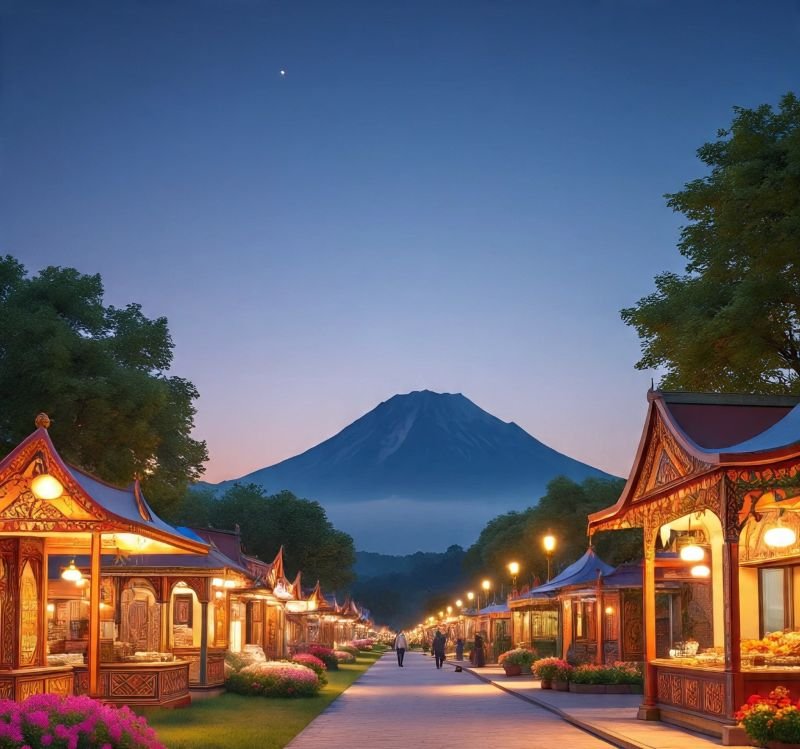
Monday, August 4, 2025
It was reported that Toranmal, roughly 450 km from Pune in northern Maharashtra, had quietly become recognized by travelers desiring solitude, peace, and genuine immersion in nature. They indicated the period from November to February as ideal for visiting, when its tranquil lakes and ancient temples bestowed serenity. Observers stressed that its pristine environment, largely untouched by tourism, offered a rare opportunity to disconnect from daily routines and indulge in profound stillness.
Panhala – A Valley Steeped in Heritage
Commentators noted that Panhala, situated about 240 km from Pune, uniquely combined Maratha heritage with sweeping valley vistas. The Panhala Fort, often cited as the cultural centerpiece, drew enthusiastic history buffs and casual visitors alike. It was asserted that the window between October and March delivered the best climate for touring on foot and appreciating both architecture and scenery. Descriptions painted it as a destination where historical resonance met naturally elevating views, resulting in deeply meaningful travel.
Amboli – Foggy Forest Splendor
It was conveyed that Amboli, nearly 350 km from Pune near the Goa border, remained one of Maharashtra’s more elusive hill stations. Reports indicated that visiting from July to February offered the most enchanting experience, with dense fog wrapping around forest trails and waterfalls splashing to life in the monsoon. Observers highlighted its abundant biodiversity, attracting nature lovers, bird watchers, and photographers. They emphasized that Amboli maintained a sense of untouched wilderness, free from overdevelopment.
Igatpuri – A Retreat for Quiet Reflection
Sources explained that Igatpuri, nestled in the Sahyadri hills some 230 km from Pune, had evolved into a retreat for those in search of mental clarity and inner peace. Especially between June and February, visitors appreciated its lush greenery, refreshing waterfalls, and meditation centres like those for Vipassana. Narratives often involved solo travelers and wellness seekers finding rejuvenation in Igatpuri’s calm—an escape from urban noise where one could pause and reconnect.
Lavasa – Purposeful Lakeside Design
Observers noted that Lavasa, a mere 60 km from Pune, stood out as a thoughtfully planned hill destination. Built around a central lake and infused with European architectural influences, it received praise especially from August through March. Descriptions often pointed to its vibrant coloured buildings, navigable cycling paths, and peaceful waterfront views. Many portrayed it as a place where architecture and nature merged seamlessly, offering stylish tranquility to visitors.
Bhandardara – Nature’s Quiet Corner
It was remarked that Bhandardara, approximately 160 km from Pune, remained relatively undiscovered and highly attractive to those craving untouched natural surroundings. Sources indicated that August through February brought to life its pristine Arthur Lake, cascading waterfalls, and hiking trails like those to Ratangad Fort. Reviews emphasized that minimal commercialization enhanced the sense of solitude and the ability to recharge fully in nature’s embrace.
Matheran – The Unique No-Car Hill Station
Observers shared that Matheran, about 120 km from Pune, was unique as India’s only automobile-free hill station. Noted to be most enjoyable between October and May, it offered horse-back rides, red-soil walking paths, and nostalgic journeys via the toy train from Neral. Reviewers stressed its clean air, vintage ambiance, and peaceful environment—attributes that especially appealed to families and solo explorers seeking eco-conscious simplicity.
Panchgani – A Tranquil Tabletop Haven
It was reported that Panchgani, around 100 km from Pune, charmed visitors with its historic boarding schools, expansive table-top vistas, and timeless calm. Analysts suggested September through May as the prime travel window. It was described as an idyllic escape—slow-paced, spacious, and imbued with colonial-era charm—sending a message of relaxed elegance and serene weekend retreat.
Mahabaleshwar – Strawberries & Scenic Trails
Sources consistently identified Mahabaleshwar, roughly 120 km from Pune, as a perennial favorite among families and couples. They indicated that between October and June, the town’s strawberry farms, Venna Lake boating, forest walks, and scenic lookout points offered a multifaceted experience. Reviewers commented that its comfortable climate, charming ambiance, and agricultural richness created memorable stays for diverse travelers.
Lonavala – The Monsoon Wonderland
It was emphasized that Lonavala, merely 65 km from Pune, retained its reputation as a preferred weekend getaway, particularly from July to February. Observers frequently described its lush greenery, dramatic waterfalls, and sweeping hill viewpoints, as well as the region’s signature sweet, chikki. Because of its proximity to urban centers and photogenic landscapes—especially during rains—it was said to draw crowds seeking quick yet immersive nature escapes.
Broader Industry Implications
Travel experts conveyed that the surging interest in these ten hill destinations signaled emerging transformation in traveler preferences and industry response:
Shifting Travel Patterns:
- Eco-aware tourism was gaining ground, with emphasis on car-free zones, natural preservation, and low-impact experiences (e.g. Matheran).
- Destinations like Lavasa and Igatpuri were evolving into favored retreats for digital nomads seeking balance between productivity and tranquility.
- Peak travel periods from July to February aligned with monsoon beauty, festival calendars, and cooler climates, enhancing seasonal demand.
- International travelers were increasingly motivated to visit offbeat, culturally rich destinations offering authentic engagement over crowded mainstream spots.
These observations suggested a global shift toward wellness tourism, with a growing emphasis on mental well-being, cultural authenticity, and regional diversity in travel choices.
Global Traveler Impacts
Forecasters indicated that, globally, travelers might begin seeing these hill stations not just as scenic stops but as immersive wellness retreats, historic landmarks, or eco-friendly havens. The travel sector was anticipated to adapt by:
- Developing eco-retreat packages centered on sustainability
- Promoting slow travel experiences that celebrate slowness and presence
- Supporting local communities through sustainable lodging and guided tours
- Elevating less commercialized destinations as thoughtful alternatives to mainstream tourism draws
These approaches built toward a travel ethos grounded in authenticity, well-being, and purposeful exploration.
Key Themes
Informants underscored these essential clusters of destination types:
- Nature-infused joyrides: Lonavala, Mahabaleshwar, Matheran
- Quiet, restorative escapes: Toranmal, Bhandardara
- Thoughtful design blended with nature: Lavasa, Igatpuri
It was asserted that these hill stations mirrored changing demands: people now sought travel experiences that were emotionally resonant, rooted in history, and grounded in natural beauty.
Travel Industry Outlook
It was further reported that stakeholders across travel sectors—from wellness retreat organizers to remote-work infrastructure planners—would find expanding opportunities in these destinations. Strategic focus on these locations could unlock:
- Rising interest from international visitors craving enriching, offbeat exploration
- Engagement with remote professionals and wellness-focused guests seeking purposeful settings
- Seasonal travel offerings highlighting monsoon aesthetics and festive backdrop patterns
Ultimately, this movement was predicted to diversify the overall hill tourism narrative, amplify regional visibility, and usher in a more responsible, traveler-centric form of tourism on the global stage.
It was observed that, increasingly, people no longer wanted mere destinations—they sought meaningful connection, peace, and sustainability. And these beautiful quarters around Pune were emerging as emblematic reflections of that larger cultural shift.
-

 Brand Stories2 weeks ago
Brand Stories2 weeks agoBloom Hotels: A Modern Vision of Hospitality Redefining Travel
-

 Brand Stories1 week ago
Brand Stories1 week agoCheQin.ai sets a new standard for hotel booking with its AI capabilities: empowering travellers to bargain, choose the best, and book with clarity.
-

 Destinations & Things To Do2 weeks ago
Destinations & Things To Do2 weeks agoUntouched Destinations: Stunning Hidden Gems You Must Visit
-

 Destinations & Things To Do1 week ago
Destinations & Things To Do1 week agoThis Hidden Beach in India Glows at Night-But Only in One Secret Season
-

 AI in Travel2 weeks ago
AI in Travel2 weeks agoAI Travel Revolution: Must-Have Guide to the Best Experience
-

 Brand Stories1 month ago
Brand Stories1 month agoVoice AI Startup ElevenLabs Plans to Add Hubs Around the World
-

 Brand Stories3 weeks ago
Brand Stories3 weeks agoHow Elon Musk’s rogue Grok chatbot became a cautionary AI tale
-

 Asia Travel Pulse1 month ago
Asia Travel Pulse1 month agoLooking For Adventure In Asia? Here Are 7 Epic Destinations You Need To Experience At Least Once – Zee News
-

 AI in Travel1 month ago
AI in Travel1 month ago‘Will AI take my job?’ A trip to a Beijing fortune-telling bar to see what lies ahead | China
-

 Brand Stories2 weeks ago
Brand Stories2 weeks agoContactless Hospitality: Why Remote Management Technology Is Key to Seamless Guest Experiences

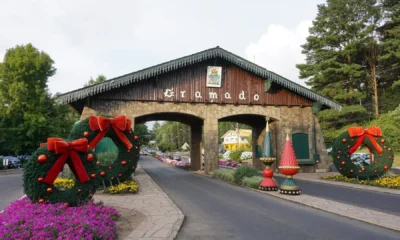

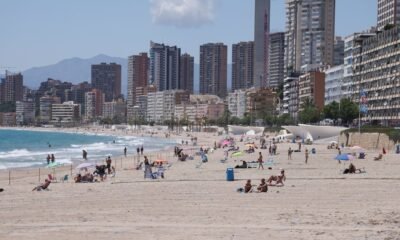







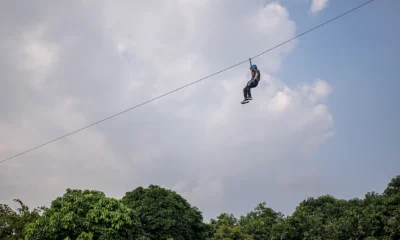

You must be logged in to post a comment Login